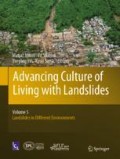Abstract
The paper presents slope instabilities together with monitoring and counteraction techniques in lignite opencast mines. It includes examples of landslides in two of the largest open-pit mines and external spoil dumps in Poland. The Belchatow mine, one of the largest excavations in Europe, is located in the central part of Poland and has lignite resources of 2 bln tons and an annual production of 42 mln tons. Landslides are registered there every year. The largest with a volume of a few thousand to 3.5 mln m3 with displacements of 2 mm-2 m per day. In the past, similar threats have occurred at the Turow mine, the second largest in Poland. It is located in the Lower Silesia District, close to the German and Czech borders. Its estimated lignite reserves are equal to 760 mln tons, with an annual production of 27.7 mln tons. In previous years, the author of this paper had the opportunity to participate in parts of landslide investigations at these mines. The research included CPTU in situ tests, laboratory tests, displacement monitoring and numerical modelling. It was difficult to come up with an interpretation of soil strength parameters. Dump soils varied in strength due to their anthropogenetic nature. The interpretation of the clayey soils parameters in the pit was complicated because of high preconsolidation and partial saturation. The new Euracoal Slopes Project conducted by an international consortium of six European countries aims for the practical implementation of new geotechnical monitoring methods. Complementary methods should allow for better prediction of landslide activity. PSI interferometry, UAV and ground-based laser scanning, in situ monitoring, shallow geophysics and laboratory triaxial and centrifuge testing should deliver new data for slope stability analysis. Although the mines have advanced monitoring systems and remediation procedures, the full elimination of hazards in mines of this size and depth is not possible.
References
Bednarczyk Z (2012) Landslide investigation and monitoring methods. Edition of Gornictwo Odkrywkowe Wroclaw. Monograph ISBN 978-83-60905-36-4, p 213
Bednarczyk Z (2013) New real-time landslide monitoring system in Polish Carpathians. Landslide Science and Practice, vol 2. Springer, Germany. ISBN 978-3-642-31444-5, pp 3–15
Bednarczyk J, Nowak A (2010) Strategie i scenariusze perspektywicznego rozwoju produkcji energii elektrycznej z węgla brunatnego w swietle wystepujących uwarunkowan. Gornictwo i Geoinzynieria Rok 34 Zeszyt 4: 67–83 (in Polish)
Bednarczyk Z, Sandven R (2004) Comparison of CPTU and laboratory tests interpretation for Polish and Norwegian clays. International Site Char. Conference ISC-2 ISSMGE TC-16. Porto, Portugal. Millpress, pp 1791–1799
Czarnecki L, Jurczyk M (2013) Exploitation in II-order gra-ben of Belchatow brown coal mine—selection of mining works technology for securing exploitation up to coordinate -11m. Gorn Odkryw 1(2013):62–69
Dmitruk S (1984) Problems in engineering geology processes modeling in opencast mining. Wyd Geol Warsaw 120p
Dmitruk S (1995) Analysis of geotechnical conditions at landslide on the south-east slope of dump embankments in Turow Mine, not published technical report of Wroclaw University of Science and Technology p 42 (in Polish)
Eck C, Imbach B (2011) Aerial magnetic sensing with a UAV helicopter. Spatial Inf Sci XXXVIII-1/C22:81–8
Jonczyk W, Organisciak B (2010) Natural hazard in KWB Belchatow mine identification end counteraction. Min Geoengineering 34(4):249–257
Kasztelewicz Z (2012) Wegiel brunatny na swiecie i w Polsce. Wegiel Brunatny 1/78:7–13 (in Polish)
Kurpiewska I, Wcislo A, Czarnecki L, Jurczyk M (2013) Classification of geotechnical threats area locate in open-cast mines as a tool of safety optimization of exploitation based on example of Szczercow field. Gornictwo Odkry-wkowe 1(2013):5–12
Milkowski D, Nowak J (2008) Prevention and monitoring of the landslide hazard, on the Nysa Luzycka River, and landslide “Swiniec” on the external dump, close to the Czech Republic border. XVI Mining Workshop, IGSMiE PAS, Krakow, pp 212–227
Milkowski D, Kaczerewki T (2009) Rutschungsgefahr am Neiβepfeiler und Erdrutsch “Swiniec” auf der Auβenkip-pe des Tagebaues Turow. 7 Tagung fur Ingenieurgeologie. Hohschule Zittau/Gorlitz Publication, FDGG Fachsection Ingnieurgeologie
Acknowledgements
The author would like to acknowledge the European Commission Research Fund for Coal and Steel for financing the project SLOPES—RFCR-CT-2015-00,001 Smarter Lignite Open Pit Engineering Solutions. Other acknowledgments are dedicated to the Polish Energy Group (PGE) the owner of the Belchatow and Turow Mines for help in the presented research.
Author information
Authors and Affiliations
Corresponding author
Editor information
Editors and Affiliations
Rights and permissions
Copyright information
© 2017 Springer International Publishing AG
About this paper
Cite this paper
Bednarczyk, Z. (2017). Landslide Monitoring and Counteraction Technologies in Polish Lignite Opencast Mines
 .
In: Mikoš, M., Vilímek, V., Yin, Y., Sassa, K. (eds) Advancing Culture of Living with Landslides. WLF 2017. Springer, Cham. https://doi.org/10.1007/978-3-319-53483-1_6
.
In: Mikoš, M., Vilímek, V., Yin, Y., Sassa, K. (eds) Advancing Culture of Living with Landslides. WLF 2017. Springer, Cham. https://doi.org/10.1007/978-3-319-53483-1_6
Download citation
DOI: https://doi.org/10.1007/978-3-319-53483-1_6
Published:
Publisher Name: Springer, Cham
Print ISBN: 978-3-319-53482-4
Online ISBN: 978-3-319-53483-1
eBook Packages: Earth and Environmental ScienceEarth and Environmental Science (R0)

